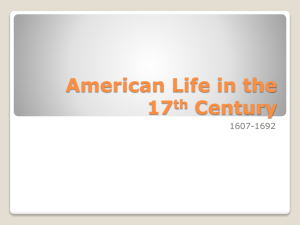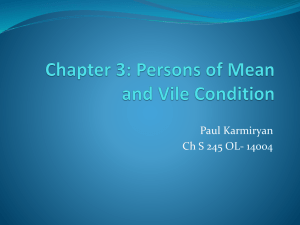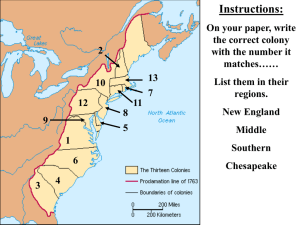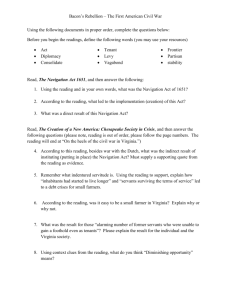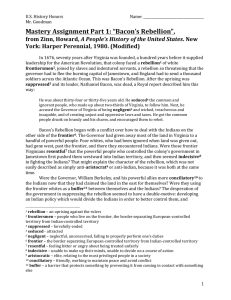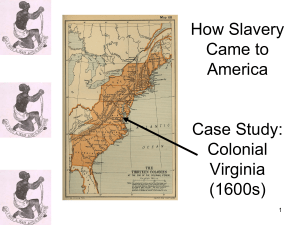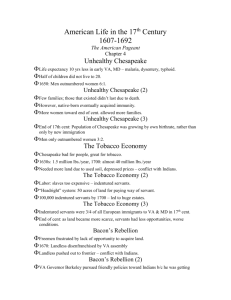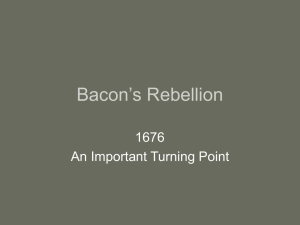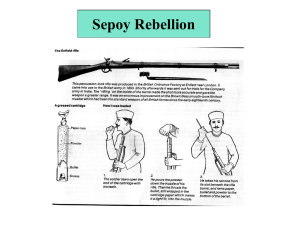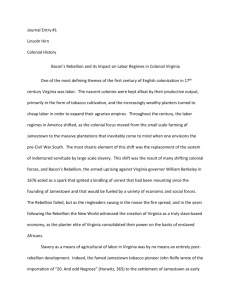Chapter 3: Persons of Mean and Vile Condition
advertisement
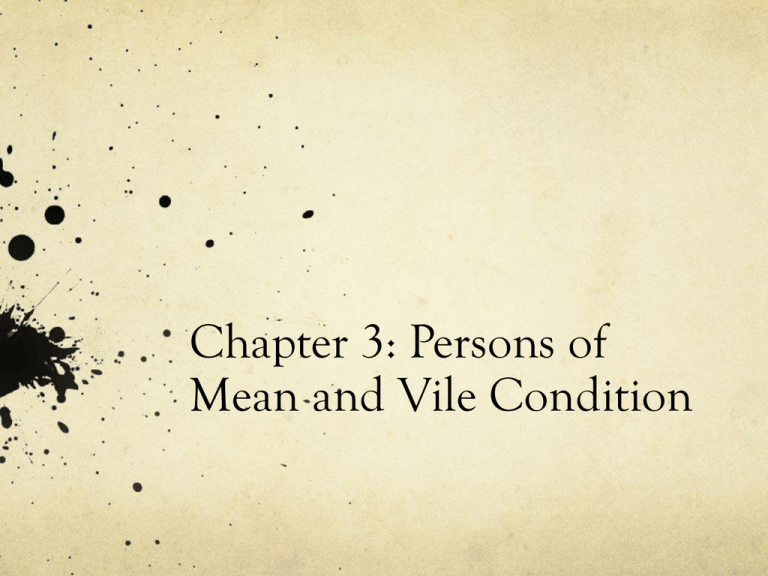
Chapter 3: Persons of Mean and Vile Condition Bacon’s Rebellion • • • • 1676-1677 First rebellion in the American Colonies Between the American Indians and Colonial Government in the Virginia Colony Conflict about how to deal with the Indians Nathaniel Bacon • Leader of the rebellion • Higher class • Concerned about killing Indians than helping the poor (Lower Class) • Denied treaty between Berkeley and Powhatan • Captured by the military and then released • Died of a sickness After the Release of Bacon • Created a populist • Took militia in and raided Pamunkey and killed men, children, and women • Raised resentment against the rich and hatred towards the American Indians • The Indians protested the Virginia Land Co. monopoly of the Beaver trade , unfair taxes, and political favoritism • His fall lead to munity even amongst his own militia William Berkeley • • Governor of Virginia His attraction to bacon was his idea of “leveling” 1700’s • Colonies grew faster • England was fighting a series of wars • Some merchants made money from the wars • Meant higher taxes, unemployment, and poverty • Virginia legislature passed laws to punish servants who rebelled • Voyage to America lasted eight, ten, or twelve weeks, servants were profits that marked the slave ships • Gap between rich and poor widened, as violence and the threat of violence increased, and the problem of control became more serious Traveling • • • • • • • Conditions were awful 8-12 weeks Servants were packed into the ship like items Servants died of starvation Some servants were eaten Children died of hunger and disease and thrown in the ocean Women who were pregnant thrown in the sea if un able to deliver Revolts • • • • • 5 revolts against the proprietor Erupt with great violence and frequency Elite (upper class) fear of revolts Upper classes developed tactics to deal with fear “not born free but born slave and free” Economic classes • • • • • Caused tensions Revolts start to occur ¾ of the New York land belong to to 30 people (upper class) The poor was growing too, more and more became poor “..in all times some must be rich, some poore, some highe and eminient in power and digniteie; others meane and in subjection” Cruel Treatment of Servants • Beatings and whippings • Women servants were raped • • • • Many servants would die after their arrival, many were children due to: High suicide rate • Disease and Starvation Not allowed to have children and marry because it would interfere with work • Scared of the outcome if they rebelled • Whipping, starvation, misery, etc. Without consent it is seen as adultery, fornication and children seen as bastards After the Rebellion • Racism was becoming more and more practical • Indians remained an obstacle to expansion • White slaves were allowed to join the militia in fear of slave rebellion growing • Black slaves were easier to control • The numbers grew, the prospect of a slave rebellion grew • Black slaves were pouring in • • Everywhere the poor were struggling to stay alive, especially from freezing in the cold weather Class lines hardened through the colonial period, distinction between rich and poor become sharper • They lived off the black slaves and white servants Boston • Boston grew from 1678-1770 • The % of adult males who were poor lost property rights meaning voting rights • Richest of all regions 29% of the town were landless men • Rioting became a form of protest • Severe food shortage • Protesting the high prices established by merchants demolished the public market • “the town meetings, while ostensibly democratic, were in reality controlled year after year by the same group of merchant aristocrats, who secured most of the important offices” After the Rebellion (cont.) • Strikes by workers increased among coopers, butchers, bakers, and other landless artisans as well as sailors • Demolishing public squares as well as homes of the landed • Natives were not acquire or considered for labor and were constant threat on frontier • Slaves escaping plantations in the South to join Tribes • White running to join native tribes, but if captured and given the chance to go back to white society, they would go back • Southern militias used blacks to find Indians on the frontier Aftermath • Middle class small farmers and city artisans promoted to created a bond between landed and poorer whites • System of indentured servitude quickly disappear, thus alienating the negro and Indians which brought loyalty • Brought loyalty and directed hatred away from class conflicts enough to keep the these groups apart • To bind the loyalty a device was equality and liberty, could eventually unite whites to fight a revolution against England, without ending slavery and equality Reference(s) • Zinn, Howard. A People’s History of America. New York, New York, CA. Harper Collins Publishers, 1995.
